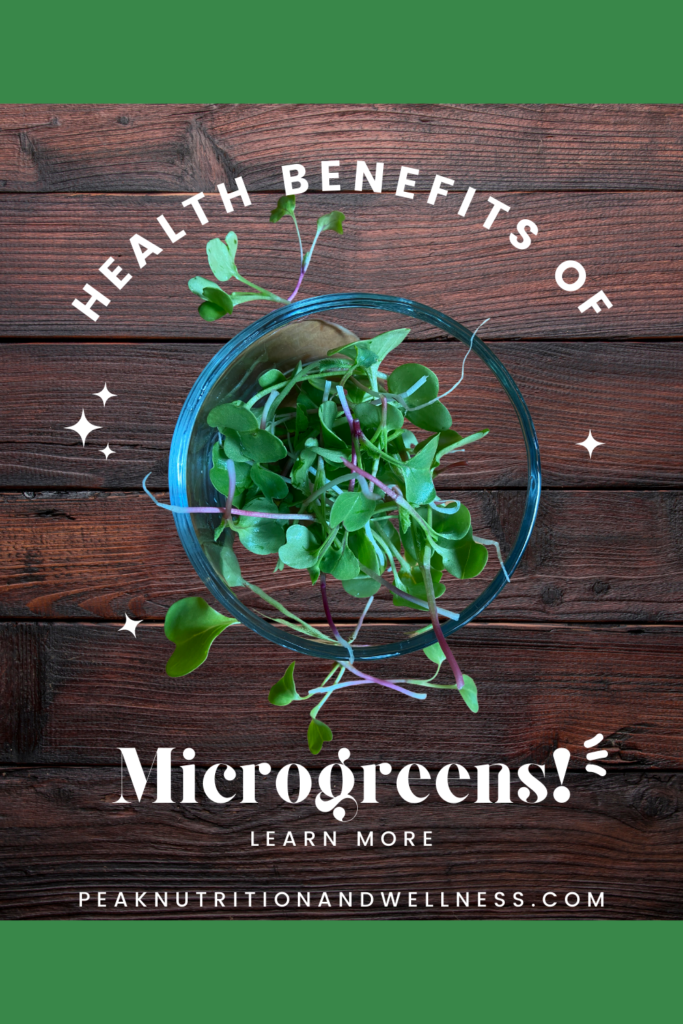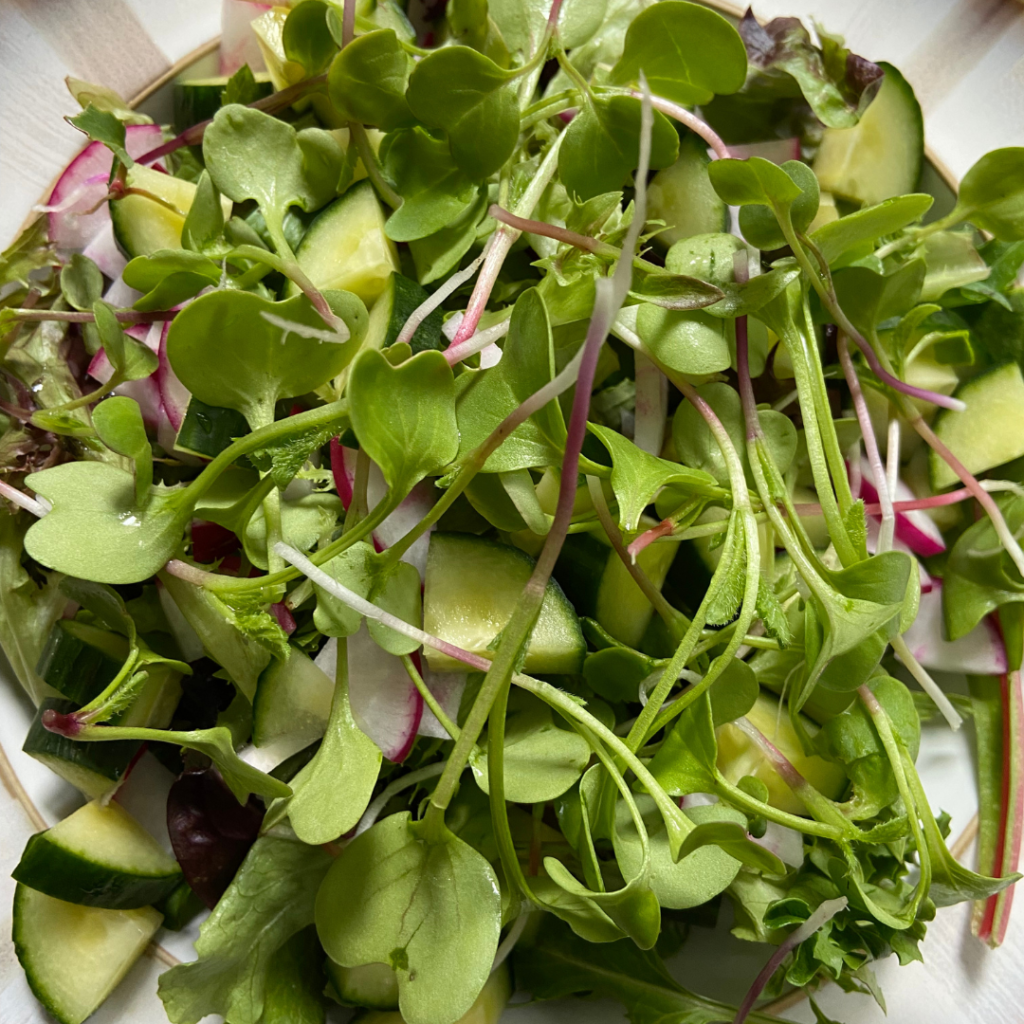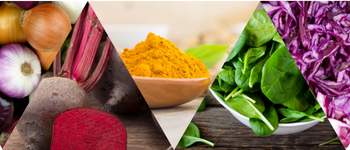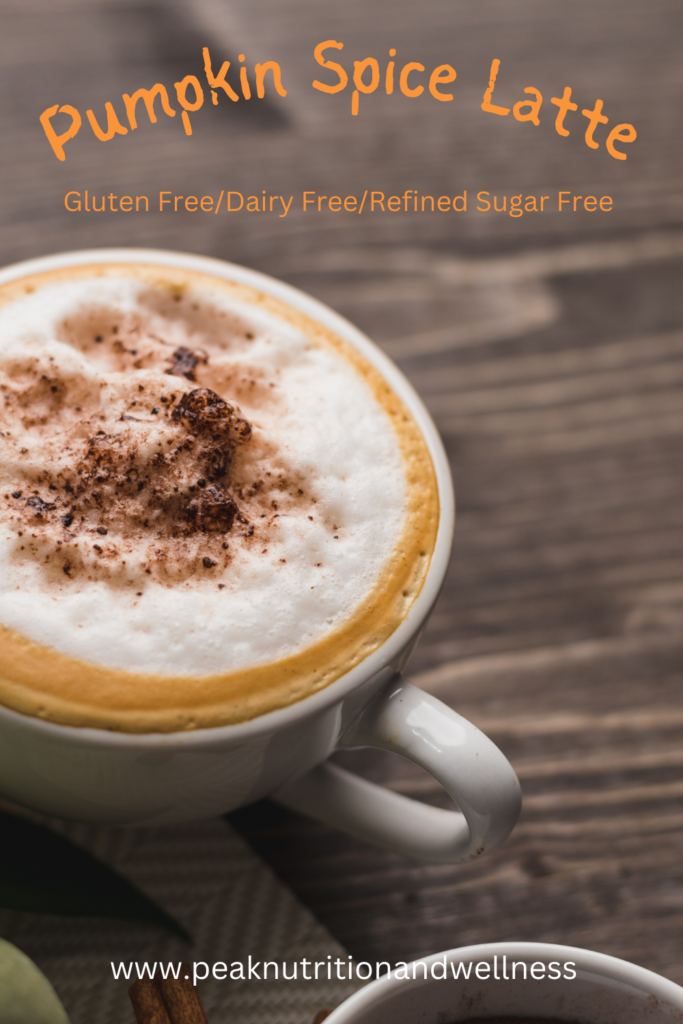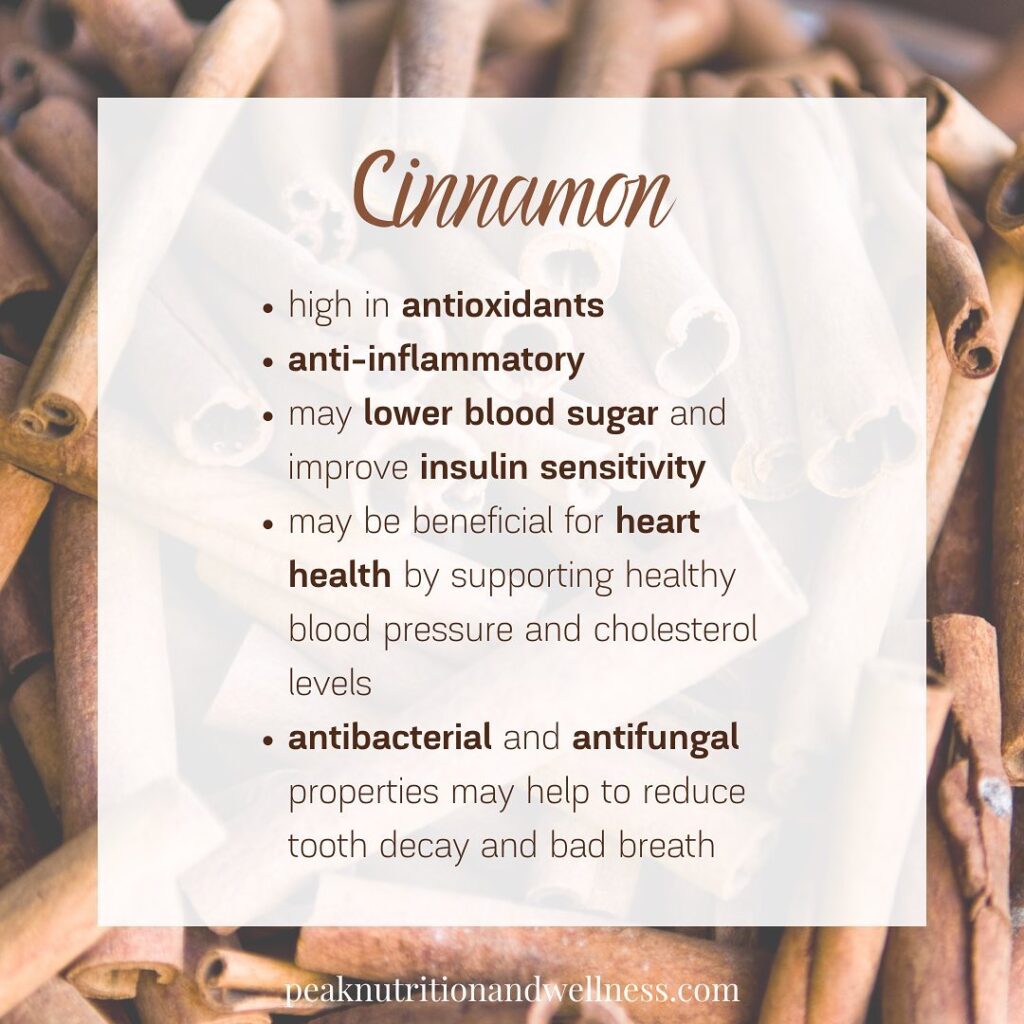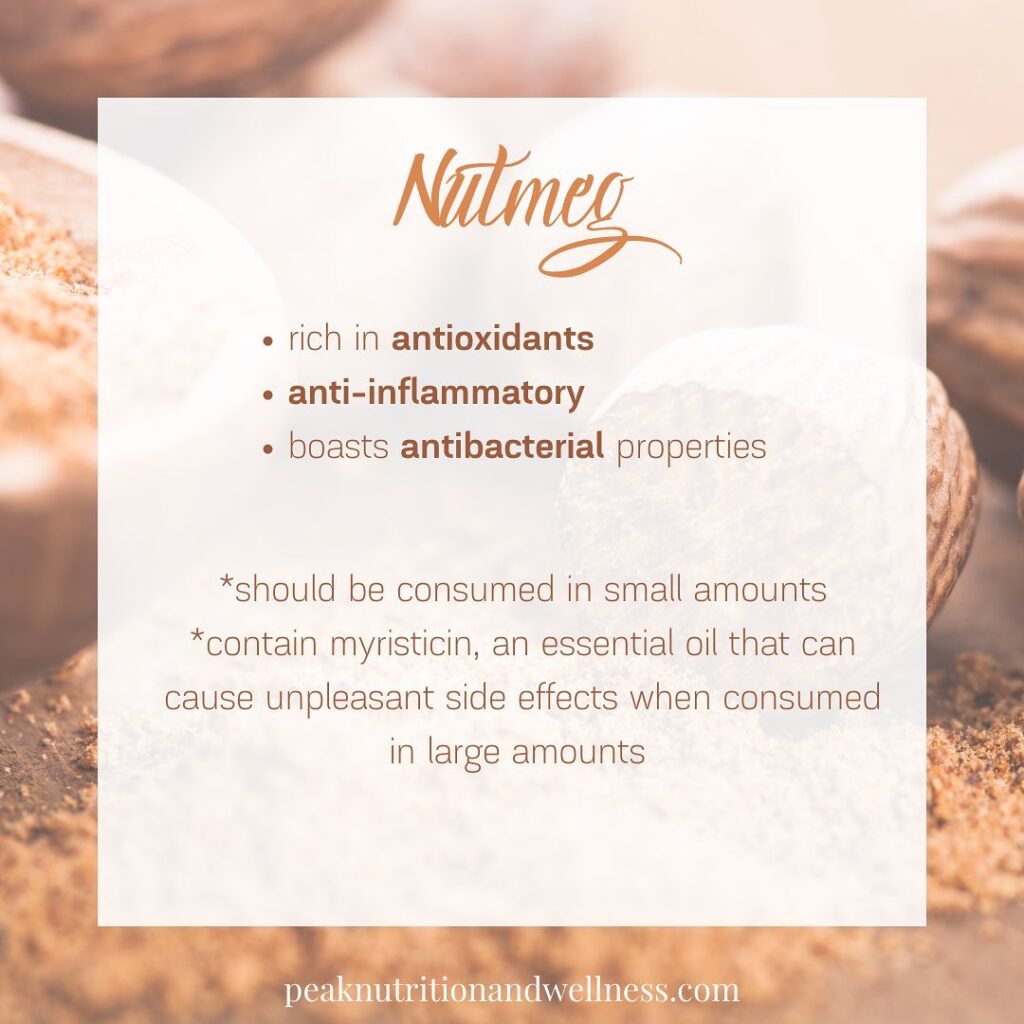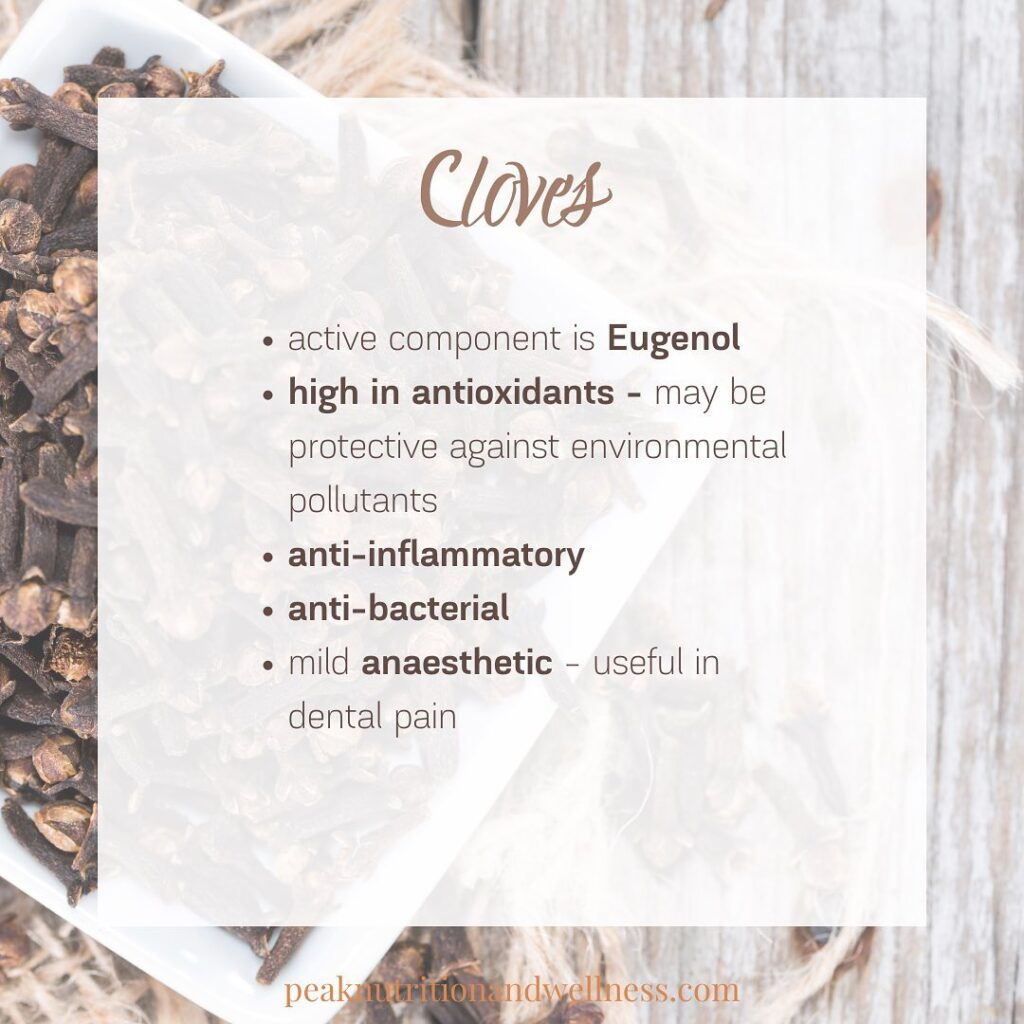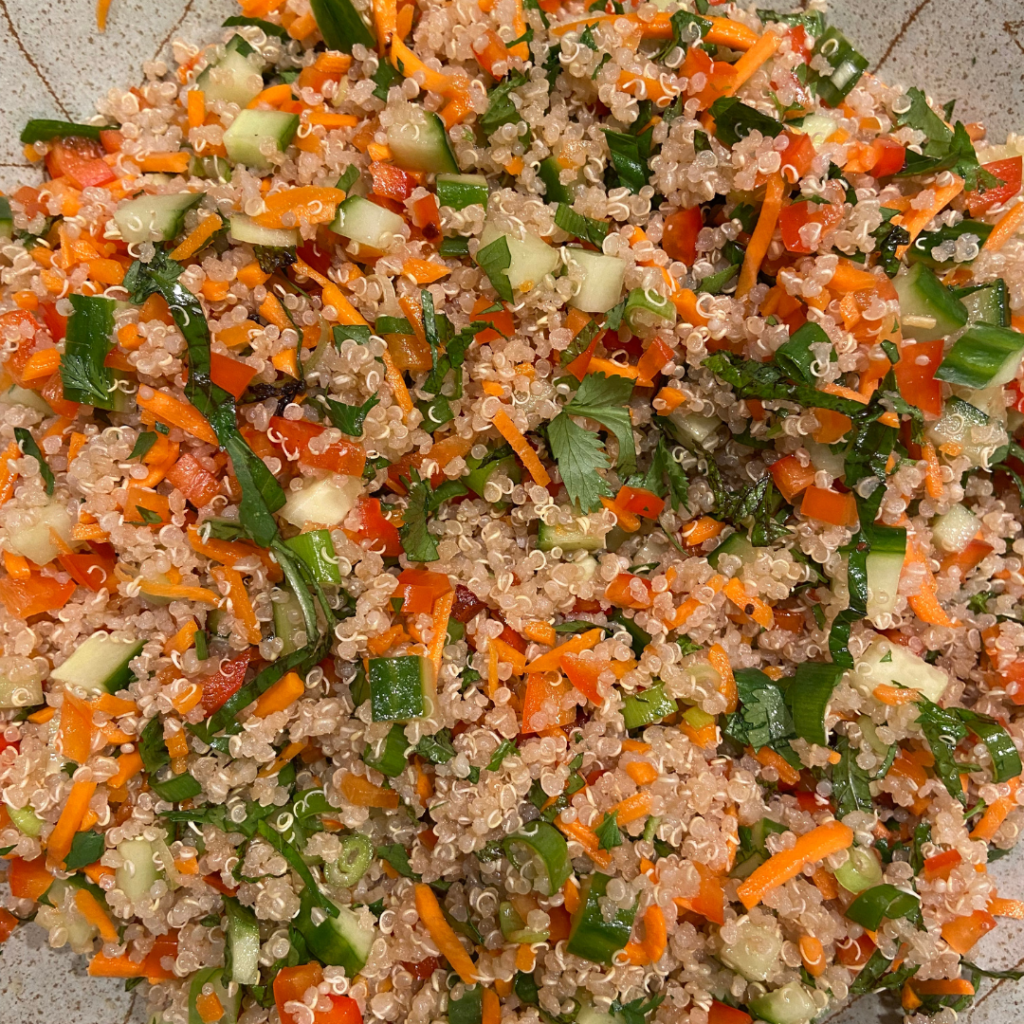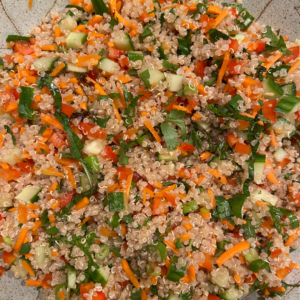Hello friends! Garden season is in full swing here and we are starting to reap all the tasty rewards of our little garden patch. I would say my gardening skills are amateur at best, but I do know that the garden waits for no one and when the veggies are ready…they’re ready, whether you are are not!
So what do you do when the bounty from your garden is more than you can possibly eat? You could be a good neighbor and share the wealth, or you can find ways to preserve that summer garden deliciousness for a later date! (Or do both! Showing up on your neighbor’s doorstep with a jar of this Kale Pesto is sure to score you big neighbor points!)
This vibrant creation isn’t just a taste explosion; it’s a nutritional powerhouse that is super versatile and easy to incorporate into almost any meal.
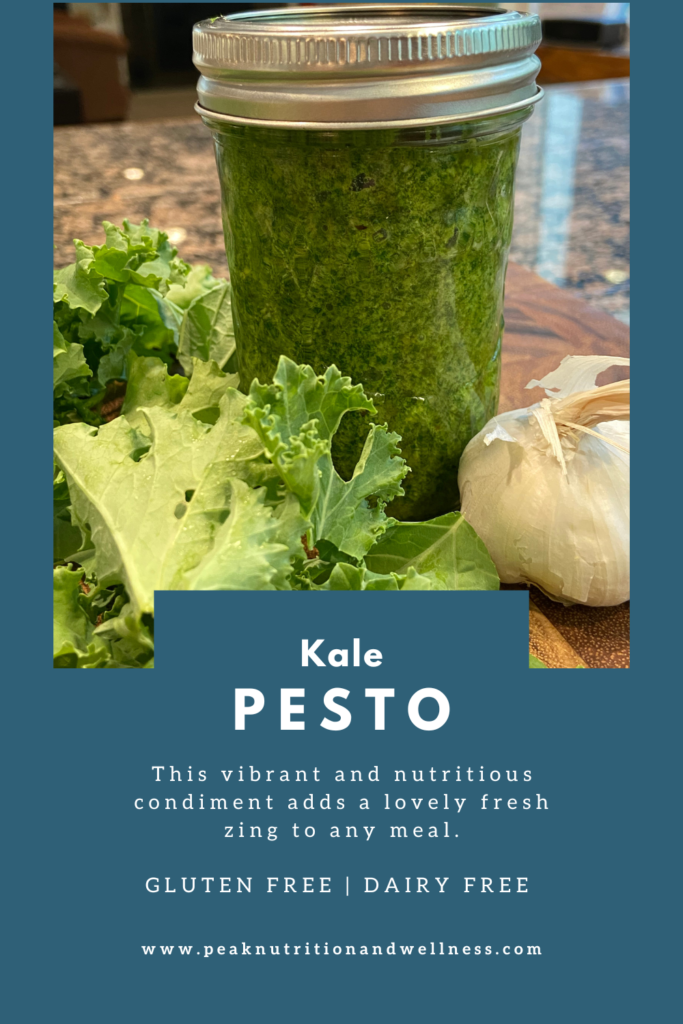
🌱 The Nutrient-Rich Boost of Kale:
Kale is known as a superfood, and for good reason. Packed with essential vitamins, minerals, and antioxidants, kale supports overall health and vitality (1). Its substantial fiber content contributes to a healthy gut, which is essential for overall health.
Kale is a member of the cruciferous family of vegetables. Probably my favorite family of veg, it also includes cauliflower, cabbage, brussel sprouts, broccoli, collard greens, rutabaga and turnip. I mean, what’s not to like? Besides being uber delicious, this family of vegetables is known for their health benefits, which include supporting the immune system, supporting detoxification, regulating blood pressure and even potentially reducing the risk of various cancers (2)(3)(4).
🍽️ Pesto, Your Meal Prep Ally:
Even if my hard sell on the nutritional benefits of kale hasn’t swayed you, the tasty zing this pesto will add to your meals will! Whether you’re drizzling it over zucchini noodles, tossing it with roasted veggies or mixing it into your scrambled eggs, Kale Pesto elevates your meals by infusing them with yumminess (and nutritional goodness😉). It’s a simple way to add some excitement to your plate.
🥦 Reduce Food Waste with Pesto:
Got extra produce hanging out in your fridge, unsure of its destiny? We’ve all been there! Whether you got extra zealous in the produce aisle this week or your garden produced more than you can get through, don’t let those greens go to waste!
Kale, spinach, arugula, carrot tops, basil, cilantro, heck, even that carton of Spring Mix that never stays fresh as long as it should – you can turn any green into a delicious pesto. Best part? Pesto freezes like a champ, allowing you to enjoy the harvest’s bounty throughout the year.
🔃 Saavy Swaps
I stuck with the traditional pine nuts for this recipe. Truth be told, I sent my hubby to the grocery store with my list and, dutifully, he followed it to a tee. Those pine nuts were EXPENSIVE y’all! Had I been there, I likely would have made a game time decision to swap those babies out for something a little more budget friendly.
There are plenty of alternatives you can use for the pine nuts – almonds, walnuts, pepitas, even hemp hearts. If you are sensitive to nuts and/or seeds, make your pesto without! You may need to decrease the amount of oil to keep the pesto from being too runny.
I kept this recipe dairy free by subbing in nutritional yeast for the more traditional Parmesan cheese. Nutritional Yeast adds a bit of that cheesy flavor without the dairy. It’s also a great source of Vitamin B12. If you tolerate dairy, feel free to use 1/2 a cup of grated Parmesan cheese in place of the Nutritional Yeast.

Kale Pesto (Gluten Free/Dairy Free)
Equipment
- 1 Food Processor
- Measuring Cups
- Measuring Spoons
- Zester/Microplane
- Mason Jars for Storage
Ingredients
- 4 packed cups Kale (de-stemmed, washed, dried and chopped or torn into small pieces)
- 2 cloves Garlic
- 2 TBSP Nutritional Yeast
- 1 cup Pine Nuts
- 2 Lemons (zested and juiced) Approx. 4 tablespoons lemon juice
- 1 cup Extra Virgin Olive Oil
- Sea Salt and Black Pepper to taste
Instructions
- With your processor's blade in place, add peeled garlic cloves and pine nuts to the bowl of your food processor and pulse until chopped to a fine texture.

- Add chopped kale, lemon zest and the juice of the 2 lemons to the food processor.

- With processor running, slowly pour the oil into the bowl of the food processor until everything is combined.
- Add nutritional yeast and pulse to combine.
- Add sea salt and pepper to taste and pulse a few times to combine.

- Transfer pesto into mason jars. You can choose to heat seal jars, but I simply pop the jars in the freezer (leave some room at the top of the jar for expansion.

- Keeps in fridge for approx. 5 days or in the freezer for 3 months.
Notes
- If you tolerate dairy, you may choose to substitute 1/2 a cup of grated Parmesan cheese for the Nutritional Yeast.
- Other nuts or seeds may be substituted for the pine nuts or a combination of nuts and seeds could be used. Some options include walnuts, pumpkin seeds or hemp hearts.
- Use pesto over roasted meats, swirl it into your scrambled eggs, toss with roasted vegetables or make a gluten free pesto pasta by tossing it with some spiralized zucchini and cooked chickpea pasta.
Sources:
- https://fdc.nal.usda.gov/fdc-app.html#/food-details/168421/nutrients
- Morrison, M. E. W., Joseph, J. M., McCann, S. E., Tang, L., Almohanna, H. M., & Moysich, K. B. (2020). Cruciferous Vegetable Consumption and Stomach Cancer: A Case-Control Study. Nutrition and cancer, 72(1), 52–61. https://doi.org/10.1080/01635581.2019.1615100
- Bayat Mokhtari, R., Baluch, N., Homayouni, T. S., Morgatskaya, E., Kumar, S., Kazemi, P., & Yeger, H. (2018). The role of Sulforaphane in cancer chemoprevention and health benefits: a mini-review. Journal of cell communication and signaling, 12(1), 91–101. https://doi.org/10.1007/s12079-017-0401-y
- Hodges, R. E., & Minich, D. M. (2015). Modulation of Metabolic Detoxification Pathways Using Foods and Food-Derived Components: A Scientific Review with Clinical Application. Journal of nutrition and metabolism, 2015, 760689. https://doi.org/10.1155/2015/760689
💚 Unlock Your Body’s Natural Healing:
If you’re ready to take charge of your health and make sustainable changes to your diet and lifestyle, I’m here to support you every step of the way. As a functional, holistic nutritionist, I specialize in helping individuals like you find relief from symptoms that have been ruling your life. Say goodbye to low energy, restless nights, and digestive discomfort – and say hello to a life filled with energy and vibrancy!
For more information on my One to One Nutritional Consults, contact me here.
Want to change your health for the better in just 5 weeks? Learn more about my RESTART® Program here.
Looking for a unique getaway that doesn’t undo all the hard work you’ve put into your health and nutrition? Escape the ordinary with our September 2024 Cruise Croatia Gluten Free Charter!
Remember, your road to better health starts with a single step! Don’t go it alone, let me help you take your health to new heights! 🌿🌈🌱


